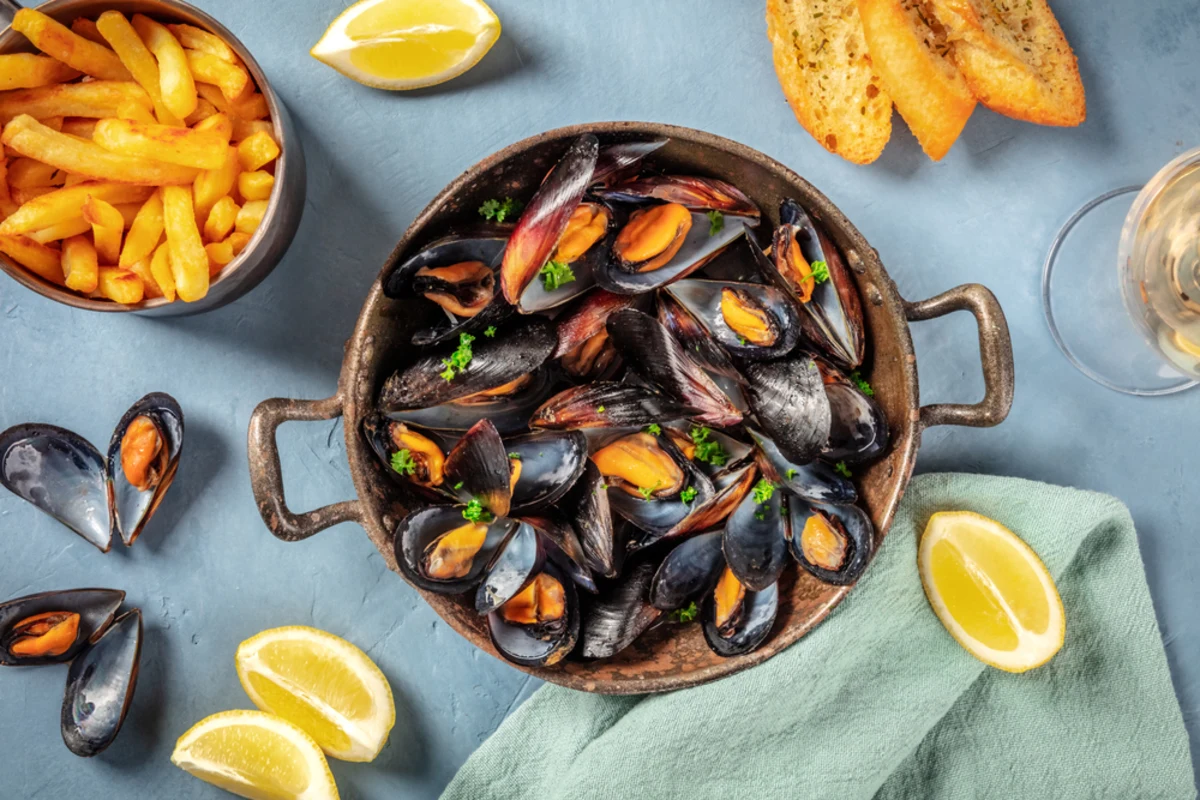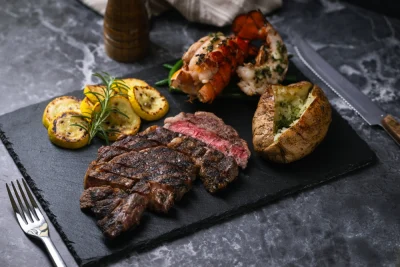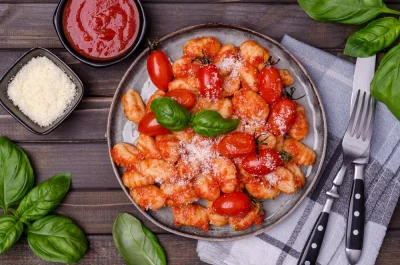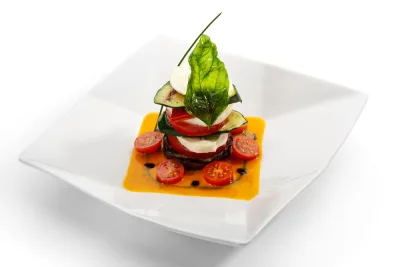
Moules Frites: The Ultimate Guide, Recipe & Wine Pairings for U.S. Food Lovers
Introduction
Imagine the sizzle of golden fries, the aroma of buttery garlic, and the briny freshness of mussels wafting through your kitchen. Moules frites—the beloved Belgian and French classic—has become a cult favorite among food lovers and wine enthusiasts in the United States. This dish, with its irresistible combination of steamed mussels and crispy fries, is a celebration of comfort, conviviality, and culinary tradition. But there’s more: moules frites is also one of the most wine-friendly meals you can make at home. With the right wine pairing, each bite and sip becomes a symphony of flavors, elevating both the food and your evening. Whether you’re a home cook eager to impress or a wine lover searching for your next great match, this guide is your ticket to mastering moules frites.
About This Dish
Moules frites (pronounced "mool freet") is more than just a meal—it's a cultural experience. Originating in Belgium but beloved throughout Northern France, this dish marries the sea’s bounty with the humble potato in a way that feels both luxurious and accessible. The story of moules frites is rooted in the bustling brasseries and seaside cafes of Belgium, where steaming pots of mussels are served with a generous heap of fries, inviting diners to linger, dip, and savor. The combination is iconic: the umami-rich, slightly salty mussels are steeped in a fragrant broth of white wine, garlic, and shallots, while the fries offer crunch, warmth, and a perfect vehicle for aioli or soaking up the flavorful cooking juices.
What makes moules frites special is its balance—light yet satisfying, rustic yet elegant. In Europe, moules frites is a symbol of togetherness, often enjoyed with friends and a bottle of crisp white wine. In the United States, where diverse food traditions thrive and wine appreciation is growing, moules frites has found a welcoming home. It’s a dish that invites creativity; local mussels from American coasts and potatoes from Idaho or Maine can easily be transformed into this continental classic. Most importantly, moules frites is a celebration of simple ingredients, expertly prepared, and shared with good company.
Key Ingredients & Their Role
The magic of moules frites lies in its simplicity and the way each ingredient amplifies the others:
- Mussels (Moules): The star of the show, mussels are prized for their sweet, briny flavor and tender texture. When cooked with aromatics and white wine, they release a savory broth that’s both complex and comforting. Mussels are also a sustainable seafood choice, grown along both U.S. and European coasts.
- Potatoes (for Frites): Fries are the dish’s soulful counterpart. Waxy potatoes, like Yukon Gold or similar U.S. varieties, yield fries that are crisp on the outside and creamy inside. Double-frying is essential for that signature crunch.
- Shallots and Garlic: These aromatics build the foundation of the mussel broth, infusing it with mellow sweetness and pungent depth. Garlic’s umami notes make the broth richer and more inviting.
- Unsalted Butter: Butter adds a luxurious, silky finish to the mussels, enhancing both mouthfeel and flavor. It’s a hallmark of classic French and Belgian cooking.
- Dry White Wine: This is not just a liquid—it’s the secret to the broth’s bright acidity and fragrant lift. The wine steams the mussels, extracting their juices and creating a sauce that’s perfect for dipping bread or fries. Choosing the right wine here also hints at your ideal wine pairing.
- Fresh Parsley: Chopped parsley adds a burst of freshness at the end, balancing the richness of the broth and fries.
- Aioli & Crusty Bread: Aioli, a garlicky mayo, is the traditional dip for fries, while bread is ideal for soaking up the last of the mussel broth.
- Lemon Wedges: A finishing squeeze of lemon brightens every bite.
Wine Pairing Considerations: The interplay of briny mussels, buttery broth, and salty fries calls for wines with high acidity, moderate body, and refreshing aromatics. Classic Old World whites like Muscadet or Sauvignon Blanc shine, but top-quality American wines—especially from California, Oregon, and Washington—can be equally stunning.
Recipe
| Prep Time | 40 minutes |
|---|---|
| Cook Time | 10 minutes |
| Total Time | 50 minutes |
| Servings | 4 |
| Difficulty | Moderate |
Ingredients:
- 1.5 kg Fresh mussels
- 1 kg Potatoes (waxy, for fries)
- 3 tbsp Unsalted butter
- 2 Shallots (finely chopped)
- 4 cloves Garlic (minced)
- 1 cup Dry white wine
- 3 tbsp Fresh parsley (chopped)
- 1/2 cup Aioli (for serving)
- To taste Salt
- To taste Black pepper (freshly ground)
- Enough to fill a deep fryer or pot Vegetable oil (for deep-frying)
- 4 slices Crusty bread (optional, for serving)
- 4 wedges Lemon wedges (for garnish)
Instructions:
- Scrub and clean the mussels, discarding any that are open and do not close when tapped. Set them aside.
- Peel and cut the potatoes into thin fries. Rinse them in cold water to remove excess starch, then pat dry with a clean kitchen towel.
- Heat a deep fryer or large pot with vegetable oil to 320°F (160°C). Blanch the fries in batches for 3-4 minutes until just tender, but not browned. Remove and set aside on a paper towel.
- In a large pot, melt the butter over medium heat. Add the finely chopped shallots and minced garlic. Sauté for 2-3 minutes until softened and fragrant.
- Add the cleaned mussels to the pot, followed by the white wine. Increase heat to high, cover, and steam for 5-7 minutes, shaking the pot occasionally until the mussels have opened. Discard any that remain closed.
- Sprinkle the steamed mussels with chopped parsley and season with salt and pepper to taste. Keep warm.
- Reheat the vegetable oil to 375°F (190°C). Fry the blanched fries in batches for 3-4 minutes until golden and crispy. Drain on paper towels and season with salt immediately.
- Plate the mussels in a large serving pot or individual bowls. Add a side of crispy fries in a small bowl or on the plate. Garnish with fresh parsley and lemon wedges.
- Serve the dish with aioli on the side for dipping the fries. Optionally, include slices of crusty bread for soaking up the mussel broth.
Nutrition Facts (per serving):
- Calories: 540 kcal
- Protein: 35.0g
- Fat: 25.0g
- Carbohydrates: 45.0g
- Salt: 2.5g
Dietary Information: Contains gluten, Contains dairy, Nut-free
Perfect Wine Pairings
Pairing wine with moules frites transforms this meal from delicious to unforgettable. The key is balancing the umami, salty, and buttery elements of the dish with a wine that refreshes the palate and complements the flavors. Here’s how to find the best match, whether you browse the aisles of Total Wine, Trader Joe’s, BevMo, or your local wine shop.
What Makes a Great Wine Pairing for Moules Frites?
- High Acidity: Essential for cutting through the richness of the butter and aioli, and highlighting the briny sweetness of the mussels.
- Minerality: Wines with a mineral edge echo the oceanic notes of the mussels and add complexity.
- Light to Medium Body: Avoid heavy, oaky wines that could overwhelm the dish. Crisp whites and light-bodied reds are ideal.
- Freshness: Aromatic whites or sparkling wines lift the dish and refresh your palate after each bite.
Top Wine Recommendations
1. California Sauvignon Blanc
- Why it works: Bursting with citrus, green apple, and herbal notes, California Sauvignon Blanc (Napa, Sonoma) offers lively acidity and a clean finish that enhances the broth’s aromatics and balances the fries’ saltiness.
- Where to find: Widely available at Total Wine, Trader Joe’s, BevMo; look for producers like Duckhorn, Joel Gott, or Benziger. Expect to spend $15–$25.
2. Oregon Pinot Gris
- Why it works: Oregon’s Pinot Gris delivers vibrant stone fruit, melon, and floral aromas with crisp acidity. It matches the gentle sweetness of mussels and stands up to garlic and butter without overpowering.
- Where to find: Check Total Wine or local shops for King Estate or A to Z Wineworks ($15–$20).
3. French Muscadet (Loire Valley)
- Why it works: The classic “moules frites wine pairing,” Muscadet Sèvre et Maine is bone-dry, light-bodied, and salty, with lemon and mineral notes that mirror the ocean. This is the gold standard in French brasseries.
- Where to find: Available at Total Wine and specialty wine stores (often under $20).
4. Washington State Dry Riesling
- Why it works: Dry Riesling from Washington combines zesty acidity, citrus, and floral notes. It’s superb with shellfish and holds up to aioli’s richness.
- Where to find: Look for Chateau Ste. Michelle or Pacific Rim at most major retailers ($10–$18).
5. Sparkling Wine (California or Spanish Cava)
- Why it works: Bubbles add texture and cleanse the palate. A Brut Cava or California sparkling fits the bill and makes the meal feel festive.
Pro Tips for U.S. Shoppers
- Trader Joe’s: Their private label Sauvignon Blancs and Cavas offer great value under $15.
- Total Wine: Extensive selection, including French imports like Muscadet and affordable Oregon whites.
- Local Wine Shops: Staff can recommend small-production American whites or interesting European alternatives.
With Vinomat, you can easily discover personalized wine recommendations and locate bottles near you, making it simple to find your perfect moules frites wine pairing every time.
Cooking Tips & Techniques
Moules frites is surprisingly approachable, but a few professional tips will guarantee success:
- Mussel Prep: Always scrub and "beard" your mussels (remove the wiry tufts) just before cooking. Discard any that remain open after a tap—they’re not safe to eat.
- Double-Frying Fries: For authentic frites, blanch fries at a lower temperature, let them rest, then fry again hotter for crispness. This two-stage method ensures the perfect texture.
- Broth Balance: Don’t skimp on aromatics—shallots, garlic, and white wine are essential for depth. Adjust salt at the end, since mussels release briny liquid.
- Timing: Mussels cook quickly. Once most have opened (5–7 minutes), remove from heat to avoid rubbery texture.
- Serving Hot: Fries are best served immediately after frying; keep them warm in a low oven if needed, but don’t cover (they’ll steam and lose their crunch).
- Common Pitfalls:
- Overcooking mussels: leads to toughness.
- Wet fries: always dry potatoes thoroughly before frying.
- Skipping wine in the broth: it’s key for flavor and for wine pairing harmony.
Serving Suggestions
The best way to serve moules frites is family-style, inviting everyone to dig in. Here’s how to elevate the experience:
- Presentation: Serve steamed mussels in a wide pot or deep bowl, with plenty of broth. Pile fries in a separate bowl or alongside for easy sharing.
- Accompaniments: Offer aioli for dipping the fries, lemon wedges for squeezing over the mussels, and slices of crusty bread for soaking up the savory broth.
- Setting: Set the table with large napkins (it’s a hands-on meal!), a chilled bottle of your chosen wine, and small bowls for empty shells. Add candles or flowers for a brasserie-inspired touch.
- Occasions: Moules frites is perfect for date nights, casual dinner parties, or any evening where good food, friends, and wine are in focus.
Conclusion
With its blend of bright, briny mussels and perfectly crispy fries, moules frites is a dish that captures the heart of both European tradition and American culinary curiosity. Paired with the right wine, it becomes a meal to remember—simple, soulful, and full of flavor. Try this moules frites recipe at home, experiment with wine pairings, and let Vinomat guide you to the perfect bottle. Your next great food and wine adventure is just a pot (and a pour) away.


